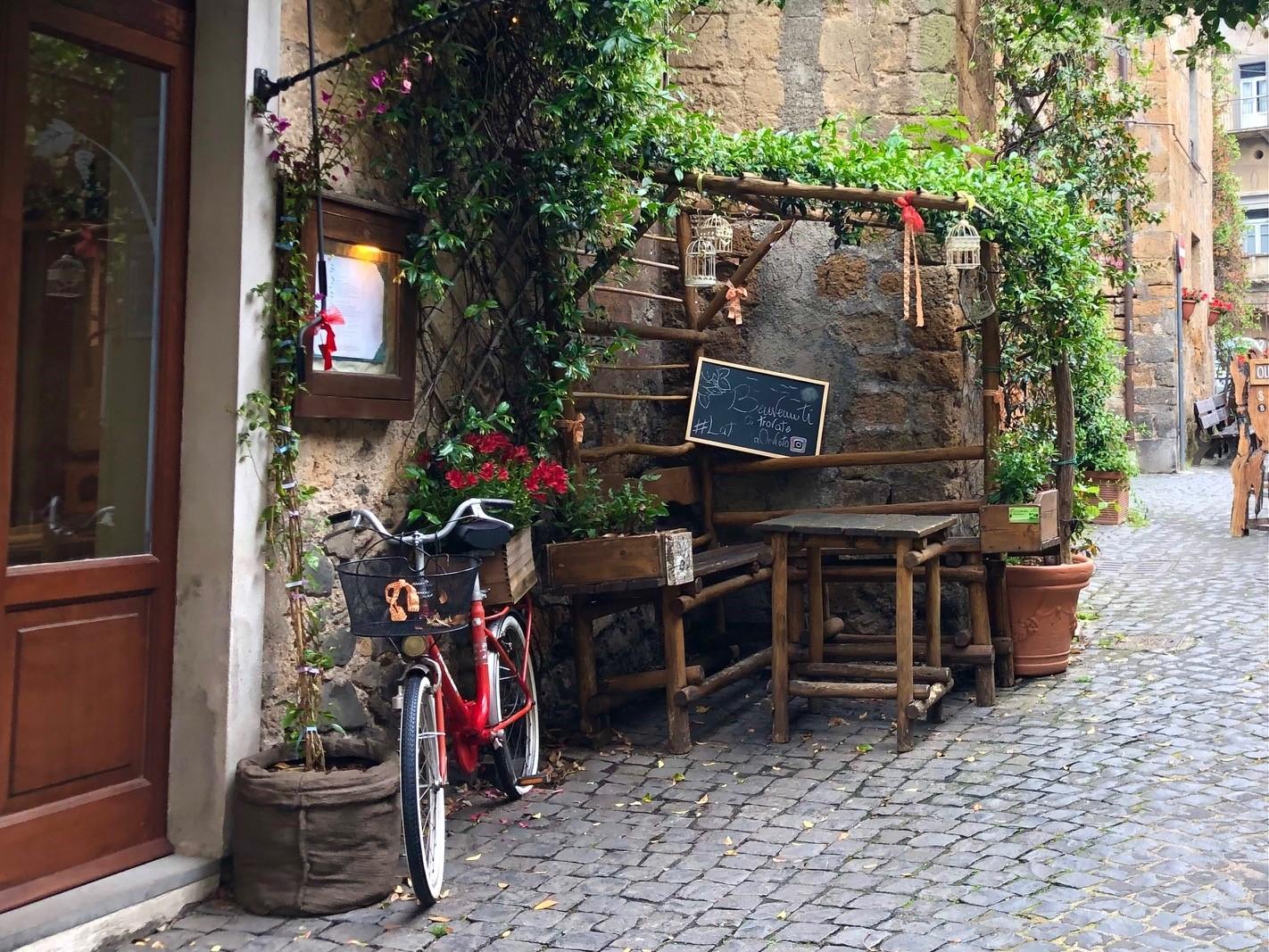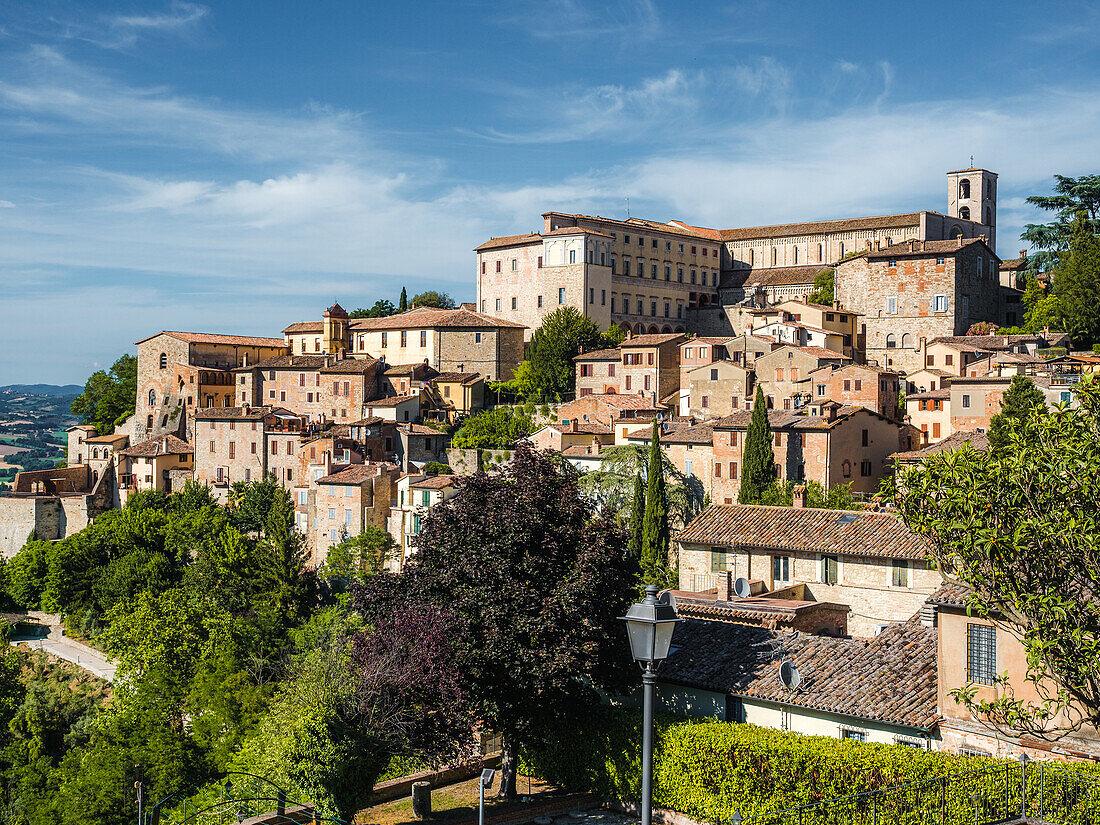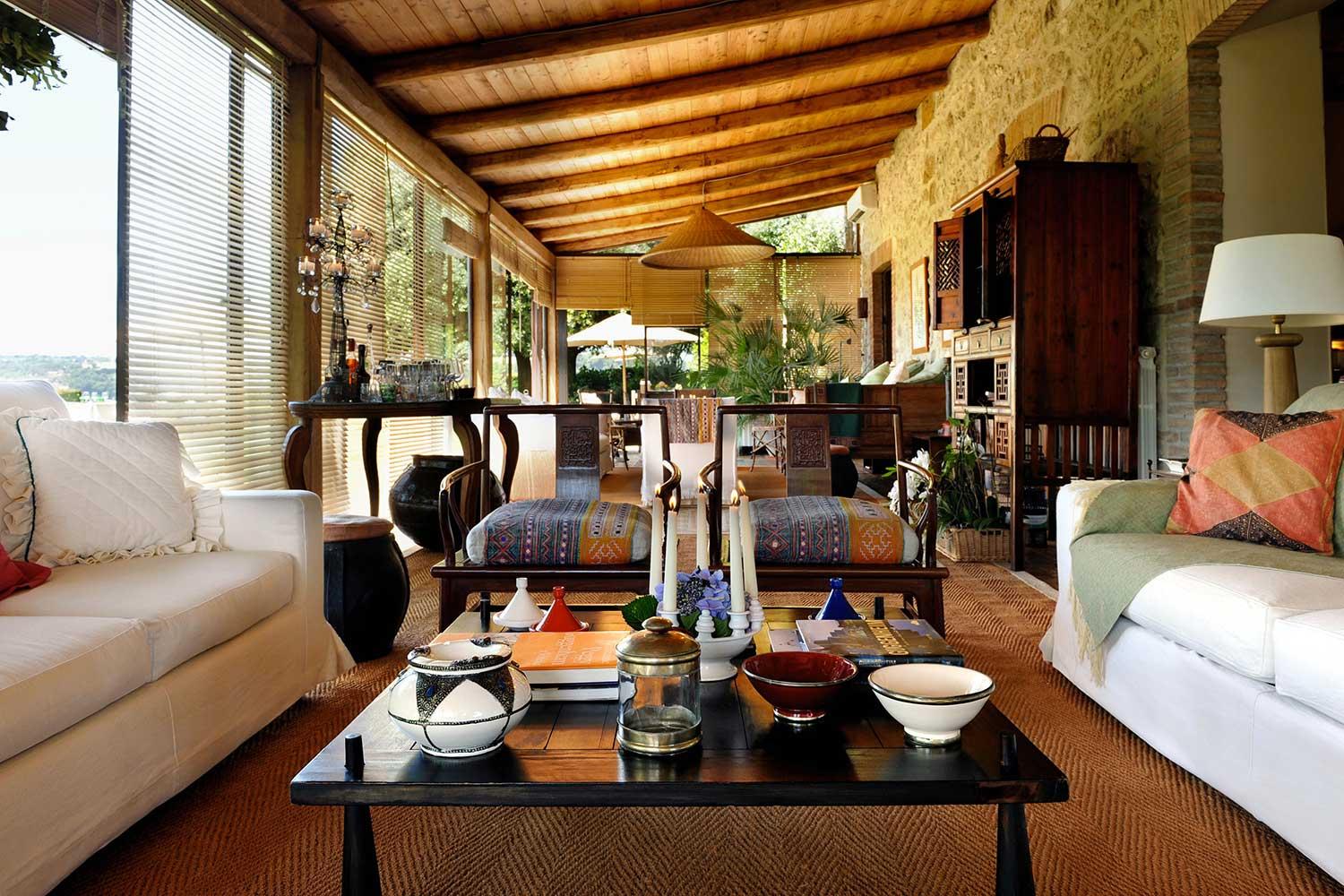Umbria Travel Guide
The region of Umbria is often overlooked when planning a dream tour of Italy, but it’s well worth a visit. Here’s our guide to visiting Umbria, full of important information and insider secrets to inspire your next trip.

Photo Credit: Credit: AchiR/Pixabay.com
Where is Umbria?
Umbria is located in the center of Italy, bordered by Tuscany, Le Marche, and Lazio. This landlocked region is one of the smallest in the country, but has a lot to offer visitors. With easy access to Rome in the south and Milan, Florence, and Venice in the north, Umbria is also a great starting point for any Italian vacation.
Why Visit Umbria?
Umbria is a region of culinary treasures including black and white truffles and gorgeous wines, Sagrantino anyone? It’s home to the renowned bright green olive oil that’s so flavorful and fresh that it transforms a simple bruschetta into religious experience. The region offers plenty of culinary experiences for travelers—head to Perugia in October for its annual Eurochocolate Festival. Hunt for black truffles in Umbria’s woods in the fall months, or make pasta with a local nonna in a hands-on cooking class.
Another reason to visit Umbria is its landscapes. Dubbed the “green heart of Italy,” Umbria is untouched by the coastline or national borders, and instead boasts unspoiled landscapes and spectacular views. It offers striking plateaus, beautiful lakes, and even a hint of mountain scenery, with the tops of the Sibillini Mountains visible from some parts of the region.
If you’re looking for a less touristy alternative to Tuscany, Umbria should be top of your list. The food is just as good, and the atmosphere will often feel even more authentic given Umbria’s wide array of cultural stimuli. From its widely known Jazz Festival to the incredible art collections scattered across medieval palaces, castles, and fortresses that are bound to take you back to bygone times.
The very fact that Umbria is rarely featured on must-see lists makes it an absolutely ideal destination for those who love taking the road less traveled without sacrificing on experience. If you love Italy and experiences that are not entirely pre-packaged and polished (read, that feel authentic and yes, a little wild), Umbria should be at the top of your Europe list for 2025.
Getting To and Around Umbria
Direct flights to Umbria depart from London and various locations around Europe, but flying into Milan, Rome, or Florence and then taking a direct train from one of these stations to Umbria’s regional capital, Perugia is the easiest option. Perugia is a two-hour train ride from Rome or Florence and a four-hour train ride from Milan. Once in Perugia, rent a car to drive from town to town.
Towns in Umbria
Umbria is not a big-city destination. Instead of bustling centers, visitors to Umbria will be met with quaint, ancient hamlets steeped in history and perched atop hillsides. Every town has something special to offer. Here are a few towns in Umbria worthy of a spot on the itinerary.
Assisi
Assisi, a medieval city built on a hill, is the most-visited town of Umbria. It is the birthplace of St. Francis, gathering place of the earliest groups of Franciscan Friars, and the place where the tomb of St. Francis will rest eternally. Visitors flock to the Basilica of San Francesco, an important Catholic pilgrimage site. Paintings by Cimabue, Pietro Lorenzetti, Simone Martini, and Giotto have made Assisi a fundamental reference point for the development of Italian and European art and architecture.

Photo Credit: valtercirillo/Pixabay.com
Yes, it’s touristy. Yes, you have to plan your trip wisely. But the two churches that make up the Basilica di San Francesco are a UNESCO World Heritage site for a reason. So brush up on your Old and New Testament stories and come prepared to marvel. Perhaps best of all, photography is forbidden inside, so all you can do is be present in the moment. If you’re inspired, bring a sketchbook.
Orvieto
A beautiful medieval village perched atop volcanic limestone and surrounded by the last vestiges of post-Roman defensive walls, Orvieto was once an impenetrable center of Etruscan civilization. Today, the old Umbrian town is easily accessible by a funicular that departs from the train station at the base of the mountain, which is only one hour away from Rome and two hours from Florence.

One of the main draws to Orvieto is its underground city with thousands of caves and tunnels, some of which are still accessible to tourists. Also, the Orvieto Cathedral is intricate, ornate, and gorgeous. Last but not least, wandering around the maze-like streets of the town will inevitably lead you into a local bar or restaurant to sip on the famed white wine of the region, Orvieto Classico. Walking around at night, soaking in the cobblestone streets and the glorious open-air piazzas, you can easily imagine what the town was like centuries ago. Unlike other parts of southern Italy, so often bustling and teeming with people at all hours, Orvieto is quiet and subdued after dark.

Photo Credit: Adwo/Shutterstock.com
Spello
Founded in the first century BC as a Roman colony, Spello still stuns visitors with its impressive architecture, winding pedestrian streets, and ancient churches. Summertime visitors will be rewarded with residential displays of flowers that are planted annually with great care.

Photo Credit: chatst2/Pixabay.com
Perugia
Umbria’s capital city is home to an old hilltop town, as well as one of the oldest universities in Italy, and plenty of historical landmarks. Get your fill of Italian culture at one of the many museums in Perugia, including the National Gallery of Umbria, which is well stocked with Renaissance paintings. Visitors enjoy a multitude of cultural events throughout the year, including the wildly popular Umbria Jazz Festival, held every year in July, and the Eurochocolate Festival in October.

Photo Credit: javarman/Shutterstock.com
Todi
For an authentic Umbrian experience, Todi is at the top of the list. Tiny, cobbled streets wind their way around the town, which looks like it’s been plucked right from the pages of a fairytale. The Palazzo del Popolo is one of the oldest public buildings in Italy, built in 1213. Today it houses adorable cafes and boutiques.

Photo Credit: robertharding/Shutterstock.com
Deruta
This small commune of less than 10,000 residents is known worldwide for its stunning ceramics. Called Majolica, this style of pottery is thought to have made its way to Deruta from the Spanish island of Majorca via merchant trades. A professional ceramics school and museum attest to the importance of this craft to the local artisan community and global collectors.

Best Things to Do in Umbria
While colder months in Umbria have their own appeal (think: excellent meals and wine tastings by the fire and endless opportunities to hunt for black truffle) the summer and spring showcase the region’s natural splendor at its best. Here are some of the best things to do in Umbria:
- Admire the Region’s Art and Culture. Umbria’s many towns and rolling hills hide a plethora of creative achievements, ranging from classical painting to sculpture and beyond. Visit The National Gallery of Umbria in Perugia or the Fondazione Burri in Città di Castello dedicated to contemporary artist Alberto Burri. Check out La Repubblica di Frigolandia, the home of Vincenzo Sparagna, the founder of innovative artist-led comic magazine Frigidaire, whose eclectic home features the entire magazine archive from the 1980s until today as well as numerous artworks. Just outside of Todi, visit La Casa Dipinta, a disorderly house that constituted the private universe of Irish polymath Brian O’Doherty and his wife, Barbara Novak. Here, O’Doherty was able to put his keen artistic sensibilities into action. The house is a work of art itself!
- Town Hop Through Umbria. Every town in Umbria stands out in its own way. Still, Assisi, the town that’s the home of Saint Francis, is one of the most beautiful in the area, home to a Basilica that’s considered one of Italy’s tremendous artistic sights, and a significant destination for religious tours and pilgrimages. Spend your time visiting Umbria’s small towns and you’ll never run out of discoveries.
- Attend a Festival. Perugia’s multi-weekend Umbria Jazz is one of the most important jazz festivals in the world, which has hosted performances by B.B. King, Carlos Santana, Eric Clapton, David Byrne, and more. Spoleto’s Arts and Performance Festival dei Due Mondi, Gubbio’s ancient Festival of the Ceri (meaning candles), and others are also highlights.
- Explore the Great Outdoors. Umbria’s hills offer plenty of interesting hikes, the best of which are across its regional parks, from the National Park of Montecucco to the Monte Subasio and the Monti Sibillini. The hike between the towns of Spoleto and Norcia, along an old, 31-mile railway track, is also an incredible experience—and a long hike, so beginners may want to bike instead.
A Guide to Food in Umbria, Italy
While its enogastronomic history places value on the simplicity of ingredients, the distance from the sea has made Umbrians creative with their cooking skills. The result is a cuisine known for the simplicity yet uniqueness of its ingredients and recipes—legumes and cereals; pork products such as sausage, salami, and the spectacular capocollo; the very famous black truffle of Norcia; and the extra virgin olive oil produced across the entire region.
Regional Specialities
Tourists to Umbria will be delighted with the variety of cuisine and delicacies which are found throughout the region. In terms of meat, although lamb dishes are popular, pork rules the land. In particular, there is a type of dried ham called Prosciutto di Norcia that is well-established as one of the best anywhere in the world. Makers have to abide by specific rules that establish the appropriate size of the pig and the manner in which the meat is cured among others.
To fuel up for a hike or a walk along the shores of Lake Trasimeno, first-time visitors simply must try the torta al testo, a flatbread cooked on a stone stove and stuffed with grilled sausages and herbs or prosciutto and pecorino cheese. This typical Umbrian ‘street food’ can usually be found in any rustic bar around any town in Umbria. Still, locals and foreigners agree that the best torta al testo is the one at Faliero’s, a small establishment next to Lake Trasimeno, as the owner Maria’s version is genuinely out of this world.
Depending on the season, there are also a variety of truffles unique to Umbria. The most prized of them all is the white truffle, which is found only between the months of November to January. Finally, the Perugina chocolate factory has been in production in Perugia since 1907 and offers delicious chocolates, including their charming chocolate-covered hazelnuts that contain a tiny love poem within the wrapper.
Here are some other foods in Umbria not to be missed:
- Olive Oil. Umbria produces some of Italy’s best extra virgin olive oils, including robust, peppery varieties like Moraiolo. Drizzle it over bread, meats, and cheeses.
- Lentils. The tiny lentils from Castelluccio di Norcia have a nutty, sweet flavor and creamy texture. They are excellent in soups or salads.
- Lamb. Tender, herb-crusted lamb features in many Umbrian meat dishes and stews. Order grilled or roasted lamb when dining out.
- Truffle Cheese. Many Umbrian cheeses like pecorino are infused with truffle flavors. They are delicious grated over pastas or as part of a cheese plate.
- Wild Boar. Game meats like wild boar are turned into sausages, stews, and ragùs. It shows up frequently in Umbrian cuisine.
- Porchetta. Herb-infused, spit-roasted pork is a specialty in central Italy, including Umbria. Get it as a sandwich or plate of sliced meat.
Best Restaurants in Umbria
Over the decades as we’ve welcomed guests to the region, we’ve discovered some of the best restaurants in Umbria:
- Osteria a Priori. This osteria is a must-visit when in Perugia, serving an all-Umbrian menu made of local ingredients from small artisanal producers, from cheeses to legumes to the black truffles served with the traditional strangozzi.
- Civico 25. One of Perugia’s best wine bars, this establishment serves regional specialties such as soup with Cannara onion or ravioli with lamb ragout.
- La Fame. A bit more experimental with its menu, La Fame in Perugia is also a great spot to have a dimly-lit romantic dinner while enjoying jazz music and its incredible selection of natural wines.
- L’Acquario. This restaurant in Castiglione del Lago’s offers show-stopping dishes like pici with goose sauce and chitarrini with smoked tench.
- Il Capanno. Located on a hilltop between Spoleto and Terni, this trattoria is considered to be one of the best restaurants in Italy.
- Vespasia. If you’re looking for a Michelin-starred restaurant, head to this pearl hidden inside Palazzo Seneca, a noble residence of the 16th century in Norcia, that serves some truly excellent creative plates.
Wines of Umbria
Umbria is best known for its simple selection of white wines, but offers world-class reds as well. Wines from this region have a rustic, earthy style that pairs wonderfully with local truffles, olives, salumi and hearty pasta dishes. Here are some of the wines to look for when in Umbria:
- Sagrantino di Montefalco. Umbria’s signature red wine, made from the local Sagrantino grape. It produces a very intense, inky, tannic wine with notes of plum and dried red berries. Montefalco Sagrantino is the most acclaimed region for these wines.
- Montefalco Rosso. A red blend combining Sangiovese with Sagrantino and other local red grapes. Montefalco Rosso offers similar notes as Sagrantino but in a more approachable style.
- Orvieto Classico. A crisp, dry white wine made near Orvieto from a blend of Trebbiano, Grechetto and other grapes. It has light floral and citrus flavors.
- Torgiano Rosso Riserva. A Sangiovese-based red made near Perugia, it is one of Umbria’s premium red wine regions. The reds are complex with good aging ability.
- Assisi Grechetto. – A fresh, vibrant white made entirely from the Grechetto grape. It offers aromas of citrus blossom and stone fruit.
- Montefalco Sagrantino Passito. A sweet, dessert-style wine made by drying Sagrantino grapes. The concentrated, raisin-like Sagrantino makes a rich, portfolio wine.
- Bevagna Rosso. An easy-drinking red made near Montefalco, often using Sangiovese with a smaller portion of Sagrantino.
Where to Stay in Umbria
Dreaming of switching off by staying in a secluded medieval farmhouse or a Roman church? Umbria offers no shortage of castles, abbeys, churches, and farmhouses that have been restored to modern-day design standards while maintaining old-world charm.
Stay at a luxury Italian villa in Umbria for a unique and relaxing experience. One of our favorite properties is Villa Tirrena, located right in between Rome and Florence on a quiet estate, complete with 31 hectares of vineyards, an exquisite sculpture garden, and a 13th-century tower. This villa was constructed in the 16th century, and offers 7 double rooms to accommodate up to 14 guests. It comes with top-of-the-line facilities and professional staff, including a private chef and wellness therapists who can lead spa retreats. It’s the ultimate hideout, providing elegance, serenity, and classic Italian charm.

Other options include two gorgeous abbey-turned-resorts opened in 2021 and 2022: Hotel Castello di Reschio and Vocabolo Moscatelli. Located in Lisciano Niccone and Umbertide respectively, these two resorts are much more relaxed in scale than their neighboring country estates, as they each only have 12 to 36 rooms, made unique by the juxtaposition of ancient stone walls with sleek contemporary art and design.

Interested in staying at one of these properties or another luxury accommodation? Contact us and start planning your Umbrian getaway.
Plan Your Luxury Umbria Getaway
With picture-perfect landscapes, charming towns, and plenty of things to do, Umbria is an Italian destination worthy of the top of your bucket list. Since the region is lesser known than nearby Tuscany, you’ll want some expert help to put together the perfect trip. At Luxury Italian Tours, we can listen to your desires and preferences and curate a tailor-made journey through Umbria and beyond. Want to learn more? Get in touch!





Leave a Reply